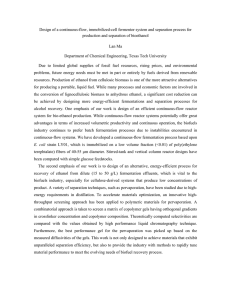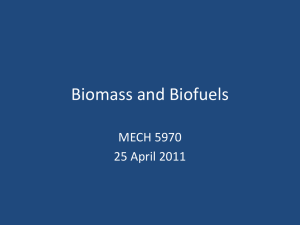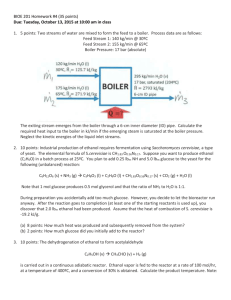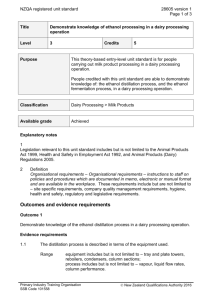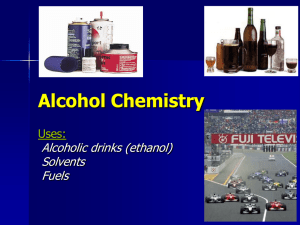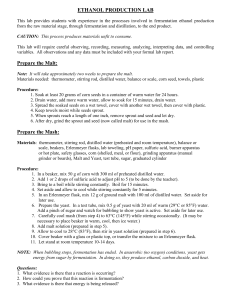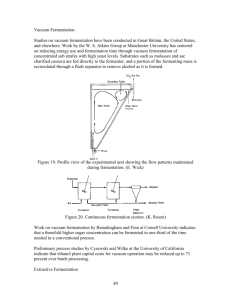Guidelines and requirements for report number three.
advertisement
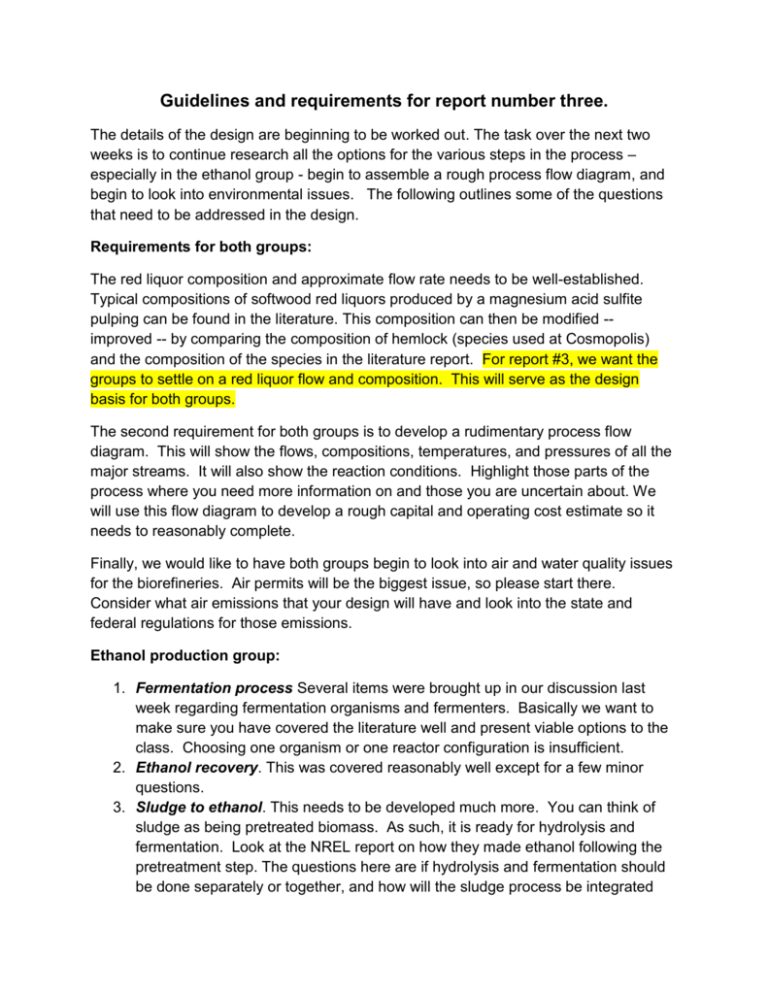
Guidelines and requirements for report number three. The details of the design are beginning to be worked out. The task over the next two weeks is to continue research all the options for the various steps in the process – especially in the ethanol group - begin to assemble a rough process flow diagram, and begin to look into environmental issues. The following outlines some of the questions that need to be addressed in the design. Requirements for both groups: The red liquor composition and approximate flow rate needs to be well-established. Typical compositions of softwood red liquors produced by a magnesium acid sulfite pulping can be found in the literature. This composition can then be modified -improved -- by comparing the composition of hemlock (species used at Cosmopolis) and the composition of the species in the literature report. For report #3, we want the groups to settle on a red liquor flow and composition. This will serve as the design basis for both groups. The second requirement for both groups is to develop a rudimentary process flow diagram. This will show the flows, compositions, temperatures, and pressures of all the major streams. It will also show the reaction conditions. Highlight those parts of the process where you need more information on and those you are uncertain about. We will use this flow diagram to develop a rough capital and operating cost estimate so it needs to reasonably complete. Finally, we would like to have both groups begin to look into air and water quality issues for the biorefineries. Air permits will be the biggest issue, so please start there. Consider what air emissions that your design will have and look into the state and federal regulations for those emissions. Ethanol production group: 1. Fermentation process Several items were brought up in our discussion last week regarding fermentation organisms and fermenters. Basically we want to make sure you have covered the literature well and present viable options to the class. Choosing one organism or one reactor configuration is insufficient. 2. Ethanol recovery. This was covered reasonably well except for a few minor questions. 3. Sludge to ethanol. This needs to be developed much more. You can think of sludge as being pretreated biomass. As such, it is ready for hydrolysis and fermentation. Look at the NREL report on how they made ethanol following the pretreatment step. The questions here are if hydrolysis and fermentation should be done separately or together, and how will the sludge process be integrated into the red liquor process; you could go everywhere from directly adding the sludge to the red liquor to only combining the final ethanol products. We would like to see some integration options and the pros and cons of each. Glycol production group: 1. Separation of lignin from sugars. This was covered very well. The challenge will be to find reasonable operating and cost data for the two separation methods. At some point we will need to make a choice. 2. Production of sugar alcohols and glycols. The reactor designs are coming together thanks in part to John Orth. More details are coming from John so we can begin to make decisions on catalyst, reactor type and reactor conditions. Potential impurities in the reactor feed streams still needs to be addressed. How clean does the feed stream need to be? 3. Separation of products. The separation of the products will be done by distillation. The details of the distillation trains need to be worked out. One member of your group needs to develop some expertise on distillation. New material from John Orth may help with the distillation train design. 4. Sources of hydrogen. A number of process options were raised. At this point I would recommend trying to narrow that done either on the basis of economics (could be very rough) or environmental considerations. In the end we will develop the design with one option but I think you could do a preliminary analysis of 4 – 6 options. For Wednesday 23 February we will want a written and oral report that addresses the issues raised above. We are still looking for a clear presentation of the different process options, the pros and cons of each, and something about how you are going to make a decision on which to adopt. In addition, we want to see a preliminary process flow diagram and discussion on air emissions. We will also want to see (as we do every with report) updated timeline and milestones; which will be updated on the 23rd to map out the rest of the quarter. If you have questions please contact me or Dr. McKean.



